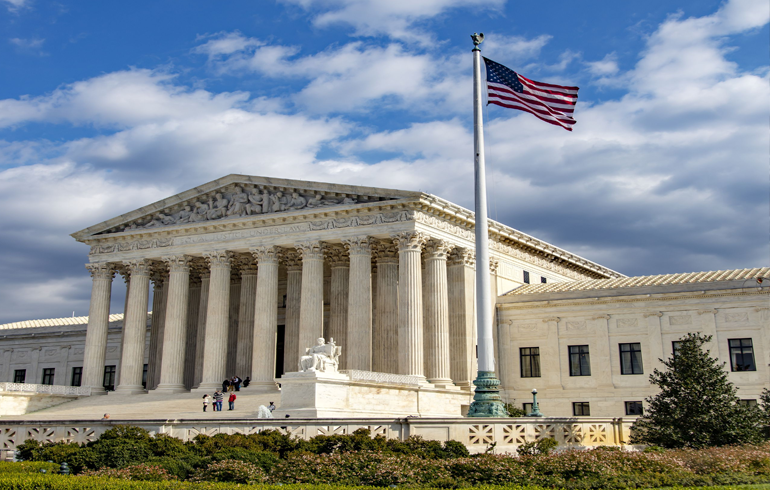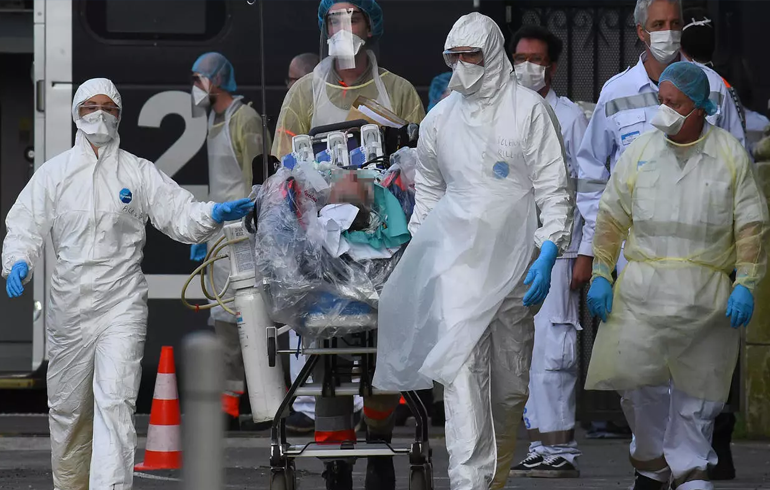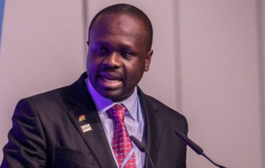The US Supreme Court has cleared the way for the first executions of federal prisoners in 17 years.
Several executions were delayed after a judge ruled on Monday that there were still unresolved legal challenges against the justice department.
Among those facing the death penalty is triple murderer Daniel Lewis Lee, who was due to be executed on Monday.
The condemned prisoners have argued that lethal injections constitute “cruel and unusual punishments”.
The Supreme Court voted 5-4 that “executions may proceed as planned”.
Last year, the Trump administration said it would resume federal executions.
In a statement at the time, Attorney General William Barr said: “The justice department upholds the rule of law – and we owe it to the victims and their families to carry forward the sentence imposed by our justice system.”
Some of the relatives of Lee’s victims oppose his execution in Indiana and had sought to have it delayed, arguing that attending it could expose them to coronavirus.
Earlene Peterson, 81, whose daughter, granddaughter and son-in-law were killed by Lee, has said she wants the 47-year-old to be given life in jail, the same sentence as his accomplice.
The Trump administration’s move has been criticised as a political decision, with campaigners expressing concern about cases being rushed.
The last inmate executed by federal death penalty was Louis Jones Jr, a 53-year-old Gulf War veteran who murdered 19-year-old soldier Tracie Joy McBride.
Who are the condemned prisoners?
Daniel Lewis Lee was convicted of torturing and killing a family in Arkansas in 1996, dumping their bodies in a lake.
Postponed from December, his execution had been rescheduled for 16:00 (20:00 GMT) on 13 July but was blocked by a ruling from District Judge Tanya Chutkan.
“The court… finds that the likely harm that plaintiffs would suffer if the court does not grant injunctive relief far outweighs any potential harm to defendants,” the judge had said.
Her ruling was consequently overruled by the Supreme Court, which said: “The plaintiffs in this case have not made the showing required to justify last-minute intervention by a Federal Court.”
Three more federal executions are scheduled in the near future. All three prisoners are, like Lee, child killers:
Wesley Ira Purkey, who was sentenced in Missouri in 2003 for the rape and murder of a 16-year-old girl whose body he dismembered, burnt and dumped in a septic pond, is due to be executed on Wednesday
Dustin Lee Honken, sentenced in Iowa in 2004 for shooting dead five people including two girls aged six and 10, is due to be executed on Friday
Keith Dwayne Nelson, sentenced in Missouri in 2001 for the rape and murder of a 10-year-old girl behind a church, is set to be executed next month
Federal and state executions – what’s the difference?
Under the US justice system, crimes can be tried either in federal courts – at a national level – or in state courts, at a regional level.
Certain crimes, such as counterfeiting currency or mail theft, are automatically tried at a federal level, as are cases in which the US is a party or those which involve constitutional violations. Others can be tried in federal courts based on the severity of the crimes.
The death penalty was outlawed at state and federal level by a 1972 Supreme Court decision that cancelled all existing death penalty statutes.
A 1976 Supreme Court decision allowed states to reinstate the death penalty and in 1988 the government passed legislation that made it available again at federal level.
According to data collected by the Death Penalty Information Center, 78 people were sentenced to death in federal cases between 1988 and 2018 but only three were executed. There are 62 inmates currently on federal death row.
Capital punishment in the US
All four condemned men are white but race is a major concern among campaigners against the death penalty in the US.
Black people account for 34% of those executed and 42% of those currently on death row despite making up only 13.4% of Americans, the Death Penalty Information Center reports.
According to the non-profit organisation:
The death penalty is a legal punishment in 28 US states
Since 1976, 1,519 executions have taken place
Since 1976, Texas has carried out the most executions (570), followed by Virginia (113) and Oklahoma (112)
There were 2,620 inmates on death row in the US as of 1 January
California has the most prisoners on death row – 725 – but has carried out only 13 executions since 1976
The vast majority of executions were by lethal injection (1,339) with just three by firing squad
Since 2002, it has been illegal to execute defendants with “mental retardation”
Source: BBC




















































